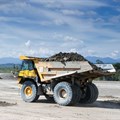Energy transition driving unprecedented growth in critical minerals market - report

The report shows that record deployment of clean energy technologies is propelling huge demand for minerals such as lithium, cobalt, nickel and copper. From 2017 to 2022, the energy sector was the main factor behind a tripling in overall demand for lithium, a 70% jump in demand for cobalt, and a 40% rise in demand for nickel. The market for energy transition minerals reached $320bn in 2022 and is set for continued rapid growth, moving it increasingly to centre stage for the global mining industry.
In response, investment in critical mineral development rose 30% last year, following a 20% increase in 2021. Among the different minerals, lithium saw the sharpest increase in investment, a jump of 50%, followed by copper and nickel. The strong growth in spending by companies on developing mineral supplies supports the affordability and speed of clean energy transitions, which will be heavily influenced by the availability of critical minerals.
"At a pivotal moment for clean energy transitions worldwide, we are encouraged by the rapid growth in the market for critical minerals, which are crucial for the world to achieve its energy and climate goals," said IEA executive director Fatih Birol.
"Even so, major challenges remain. Much more needs to be done to ensure supply chains for critical minerals are secure and sustainable."
Little room for complacency
If all planned critical mineral projects worldwide are realised, supply could be sufficient to support the national climate pledges announced by governments, according to the IEA’s analysis. However, the risk of project delays and technology-specific shortfalls leave little room for complacency about the adequacy of supply. And more projects would in any case be needed by 2030 in a scenario that limits global warming to 1.5°C.
Diversity of supply also remains a concern, with many new project announcements coming from already dominant countries. Compared with three years ago, the share of the top three critical mineral producers in 2022 either remained unchanged or increased further, especially for nickel and cobalt.
ESG making mixed progress
Additionally, environmental, social and governance (ESG) practices are making mixed progress. Companies are making headway in community investment, worker safety and gender balance. However, greenhouse gas emissions remain high, with roughly the same amount emitted per tonne of mineral output every year. Water withdrawals almost doubled from 2018 to 2021.
Accompanying the Critical Minerals Market Review 2023 is the new IEA Critical Minerals Data Explorer, an interactive online tool that allows users to access and navigate the IEA's data and projections for critical minerals. In its initial version, the tool provides users with access to the IEA's demand projections under various scenarios and technology trends. It plans to add supply-side information in future updates.
The IEA will host an international summit on critical minerals and their role in clean energy transitions on 28 September in Paris.












